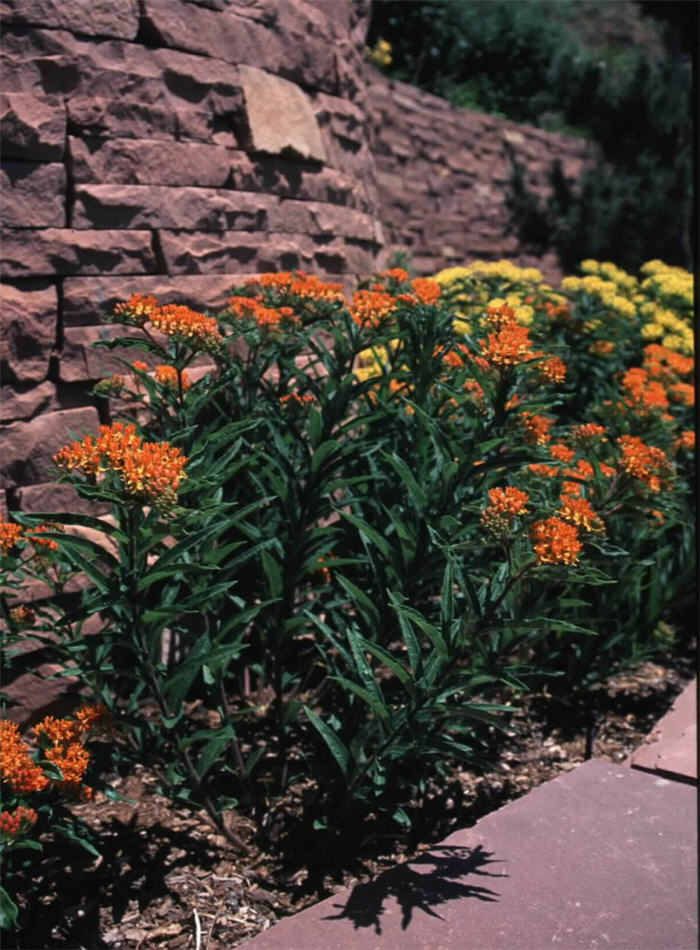| Botanical Name: Asclepias tuberosa | |
| Common Name: Butterfly Weed |

-
Anatomy
-
Culture
-
Design
Plant Type
Perennial
Height Range
1-3'
Flower Color
Orange
Flower Season
Summer
Leaf Color
Green
Bark Color
n/a
Fruit Color
Brown
Fruit Season
Summer, Fall
Sun
Full
Water
Low
Growth Rate
Slow
Soil Type
Clay, Loam
Soil Condition
Average, Poor, Well-drained, Dry
Soil pH
Neutral
Adverse Factors
n/a
Design Styles
English Cottage, Meadow, Mediterranean, Ranch, Woodland
Accenting Features
Showy Flowers
Seasonal Interest
Summer
Location Uses
Background, Perennial Border, Roadside, Walls / Fences, With Rocks
Special Uses
Naturalizing
Attracts Wildlife
Butterflies
Information by: Stephanie Duer
Photographer: Susan Frommer, JJ Neilson
Photographer: Susan Frommer, JJ Neilson
-
Description
-
Notes
Butterfly weed is a Utah native perennial, and provides bright color mid to late summer. Plants grow about 15 to 18 inches tall and wide, with erect stems of deep green leaves and vivid orange flowers at the terminal ends. Flowers are followed by seed pods with hairy tufts. A favorite of butterflies, especially Monarchs.
Grow in well drained soils in full sun to part shade. Will grow in clay or loam soils. It has a long tap root, so purchase smaller plants or start from seed. Tap roots will also make them hard to transplant. Slow to emerge in the spring, and slow to establish, generally, its a plant that needs a little patience, but not much else. It tends to die back after flowering; just let the process happen and don't be tempted to remove the stems, as the plant is pulling in all that food for the next seasons growth.